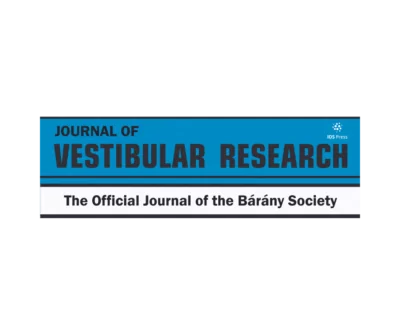
This article originally appeared in the Summer 2022 issue of On The Level.
Summary by Megan Clark, MWC, with thanks to the Journal of Vestibular Research
The Committee for the Classification of Vestibular Disorders of the Bárány Society recently released diagnostic criteria for vascular vertigo and dizziness. Classifying the type of vascular vertigo/dizziness can help identify the underlying cause and appropriate treatment.
Patients with vascular vertigo/dizziness typically present with acute vestibular syndrome (AVS), which is a sudden onset of vertigo or dizziness with nausea or vomiting, head-motion intolerance, and unsteadiness. The diagnostic criteria classify vascular vertigo/dizziness based on presentation, particularly the amount of time since symptom onset. Acute prolonged vascular vertigo/dizziness refers to symptoms lasting at least 24 hours. When a patient presents with a previous episode of vertigo/dizziness of less than 24 hours, the term transient vascular vertigo/dizziness may be used. In addition, acute vascular vertigo/dizziness in evolution may be applied when a patient with acute vertigo/dizziness is being evaluated within 24 hours from symptom onset.
Diagnostic Criteria
The criteria also include vertigo/dizziness due to vertebral artery compression syndrome (VACS). The diagnosis requires symptoms provoked by a sustained eccentric neck position in combination with imaging or sonographic documentation of vertebral artery compression or decreased blood flow in the posterior circulation.
Determining the characteristics of vestibular symptoms, associated central symptoms, and vascular risk factors are the first steps in establishing a diagnosis of vascular vertigo/dizziness. Identifying its origin is critical for selecting the proper treatment.
| Acute Prolonged Vascular Vertigo/Dizziness | Probable Acute Prolonged Vascular Vertigo/Dizziness | Transient Vascular Vertigo/Dizziness or Acute Vascular Vertigo/Dizziness in Evolution | Probable Acute Vascular Vertigo/Dizziness in Evolution | Probable Transient Vascular Vertigo/Dizziness |
|---|---|---|---|---|
| Acute vertigo, dizziness, or unsteadiness lasting for 24 hours or more | Acute vertigo, dizziness or unsteadiness lasting for 24 hours or more | Acute spontaneous vertigo, dizziness, or unsteadiness lasting less than 24 hours | Acute spontaneous vertigo, dizziness, or unsteadiness for more than 3 hours, but less than 24 hours when seen | Acute spontaneous vertigo, dizziness, or unsteadiness lasting less than 24 hours |
| Imaging evidence of ischemia or hemorrhage in the brain or inner ear, which corresponds to the symptoms, signs and findings | At least one of the following:
|
Imaging evidence of ischemia or hemorrhage in the brain or inner ear, which corresponds to the symptoms, signs and findings | At least one of the following:
|
At least one of the following:
|
| Not better accounted for by another disease or disorder | Not better accounted for by another disease or disorder | Not better accounted for by another disease or disorder | Not better accounted for by another disease or disorder | Not better accounted for by another disease or disorder |
